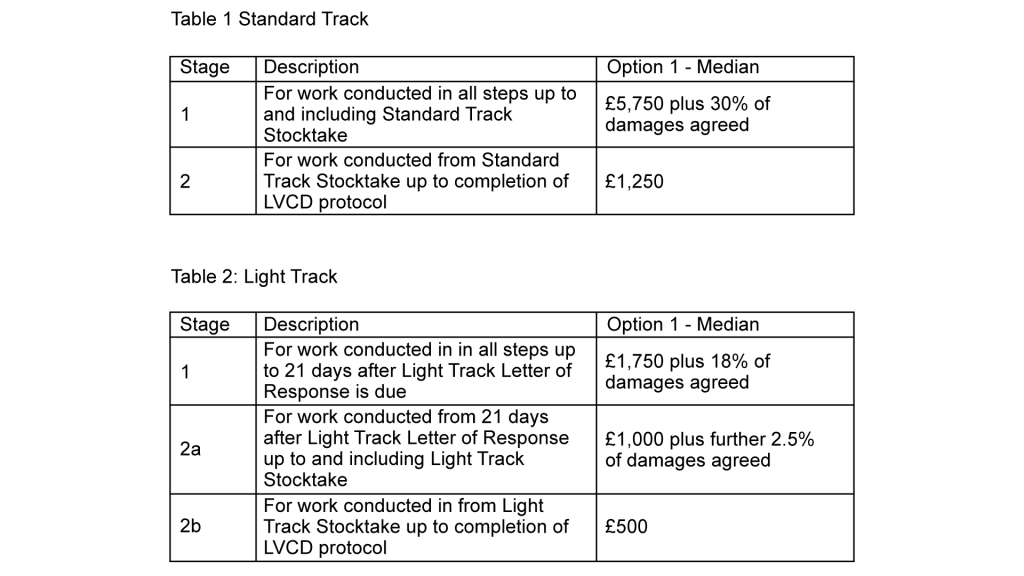Neil Rowe, Head of Practice at Maulin Law, examines the current proposals and suggested improvements for costs in medical negligence claims.
Countdown
Costs incurred in clinical negligence claims are significant and most (if not all) practitioners would agree that the costs incurred in low value claims for damages are disproportionate. A small proportion of cases reach litigation and are subject to the court’s case management and “budgeting”, but for the vast majority of cases there is no real control over costs in the pre-action stage or litigation phases up to that point. Reform is therefore needed. The proposal to apply fixed recoverable costs (“FRC”) to low value clinical disputes (“LVCD”), was intended to create a greater degree of predictability and proportionality, by reducing overall litigation costs, encouraging efficient working, creating a transparent costs structure, and promoting access to justice for some who may otherwise be unable to litigate.
Strangely a two-pronged approach developed rather than a single one.
On the one hand the Ministry of Justice (“MOJ’) has introduced a new, ‘intermediate’ track comprising of cases valued between £25,000 to £100,000, which applies to clinical negligence claims where liability has been admitted and only the amount of damages is to be determined. These changes were accepted by the MOJ back in September 2021 and subsequently implemented from 1 October 2023.
On the other hand, it is 3 years now since the DHSC first consulted on FRC for claims worth up to £25,000. Their proposed LVCD Protocol was expected to be launched in April and then (following the change of government) in October 2024 but at the time of writing there is no hint of when it may – if ever – be implemented. It is hoped by clinical negligence practitioners that DHSC will provide some clarity soon; in the meantime, this article looks at the current proposals and how they might be changed for the better.
Have I got news for you
The LVCD Protocol plans to operate as follows:
- All clinical negligence claims with a value at settlement or following judgment between £1,501 and £25,000 (even if it was valued over £25,000 at the outset and didn’t follow the LVCD Protocol) will be subject to fixed costs unless they qualify for a specified exclusion.
- If a specified exclusion applies, the claim will not be limited to the fixed costs and the claim falls within the standard pre-action protocol.
- Specified exclusions include where the Claimant is a litigant in person; the claim involves a stillbirth or neonatal death; there are to be more than three medical experts addressing breach of duty and causation; the defendant raises limitation as an issue; or there are two or more defendants.
- A dual process will be implemented with two separate tracks, the “standard” track and the “light” track. Cases should be progressed on the standard track unless they meet certain conditions for the light track. It will be for claimants to determine which track is most appropriate for the claim.
- Light track cases are for situations where the parties do not anticipate a dispute over liability. So, the conditions are where the parties agree that no expert evidence on breach of duty and causation is required; or the Defendant has made a binding admission of breach of duty; or the cause of action arises out of a ‘never event’; or the facts indicate that loss, including injury, could not have been caused by any other reason other than negligence; or there is a Serious Incident Report which identifies care below a reasonable standard; or there has been an inquest.
- Compared to the current pre-action protocol the process is frontloaded so that the letter of claim served by the Claimant is now accompanied by an indexed sorted paginated bundle of the Claimant’s medical records, expert report(s) addressing breach of duty and causation, expert report(s) addressing condition and prognosis, up to two witness statements and crucially an offer to settle the claim.
- Both track process provides, once the Defendant has responded, for mandatory stock take and discussion and if not settled then a neutral but non-binding evaluation, and then a post -evaluation period to hopefully settle before litigation. Failure to participate will lead to costs sanctions in time.
- Ultimately whether a claim will continue on the light track will be determined by whether the Defendant admits breach of duty of care, and accepts that the breach resulted in loss, including injury, within the prescribed 8-week period. If not, it reverts to the standard track. If the case is in the standard track the Defendant has 6 months to respond but if not, it falls out of the LVCD Protocol altogether.
The price is right?
I will focus here on the low value claims here because FRC in the MOJ’s scheme for intermediate track clinical negligence claims between £25-100,000 where there has been a full admission of liability and there are no more than two defendants and two experts, is subject to a complex application of banding and phases which is another article in itself.
For LVCD, FRC apply to pre-action cases. If the claim settles within the Protocol the amount recoverable depends on the track and stage reached. If the claim doesn’t settle until it is litigated but the Claimant recovers £25,000 or less then the FRC will apply to the pre-lit phase costs. If the claim settles for more than £25,000 then FRC does not apply and costs are assessed in the usual way.
The following has been proposed:

There is a £1800 bolt on for the work required in protected party/children cases.
Considering it is reported that average costs are c. £23,000 for a low value clinical negligence claim, the proposed FRC are significantly lower.
As to recoverable disbursements, it is proposed that expert report fees and ATE premiums covering the cost of expert reports will be separately recoverable. There are no current proposals to introduce caps for expert fees or the costs of ATE premiums, but these will be kept under review. Inquest costs and disbursements will also be recoverable to the extent that they would be in clinical negligence claims not subject to the LDFRC Scheme. Counsel fees will only be recoverable for approval hearings, and court fees only where it is necessary to issue to protect the limitation position or apply for disclosure.
Deal or no deal?
There are clearly some contentious areas in the proposals. As ever the devil is in the detail, but the main issues are the level of damages to which it applies, the fixed fee amounts, Claimant’s choice of track, exceptions, plus the number of experts and their fees.
Most Defendants would no doubt argue that the damages limit should be increased to say £50,000 so that many more claims would be subject to FRC. Many Claimants argue the introduction of FRC will mean that securing a specialist clinical negligence lawyer will be difficult as some will struggle to make a profit with the fees proposed and so turn cases away; moreover, increasing the limit by a further £25,000 would make matters even more difficult.
The fixed fees are challenged by many Claimants as too low – a maximum of up to £14,500 if damages of £25,000 are recovered at the end of the standard track in a non-child/protected party case; up to £8,375 in the same scenario for the light track. That said they have been carefully formulated by the DHSC and the figures are certainly proportionate. A sensible compromise approach would be to keep the limit to £25,000 and the fixed fees as proposed so DHSC can review the number of cases going through the scheme and better assess the access to justice argument. Hopefully specialist Claimant firms will be able implement the same sort of efficiencies as Defendant firms who are used to working to fixed or capped fees.
There is scope for disagreement on the exceptions and conditions which will determine how many cases will fall within the scheme and on which track. Claimants, given they make the decision, might try to justify exclusion by saying 4 experts rather than 3 are needed, but it is not anticipated that there will be many cases where the complexities demand more than 3. Equally Claimants may try to argue that conditions do not apply so that the more lucrative standard track is appropriate rather than the light track. Rather than encourage “satellite disputes” over definitions of never events, the contents of investigation reports, or whether the facts speak for themselves, it would probably be more certain to rely on clear admissions of liability.
Clinical negligence claims are driven by expert evidence and very often the bulk of costs claimed are made up of expert fees which are higher than the lawyers’ fees. It is therefore surprising that there is no proposal to limit expert fees in the same way as the lawyers’. Considering the figures set out above, it should be possible for experts to produce suitable reports on breach/causation/condition & prognosis within capped or fixed fees between say £1000 – £2500 so that disbursements overall remain proportionate.
They think it’s all over
In conclusion, whilst many clinical negligence lawyers might have reservations about the current FRC proposals the need for reform remains. Rather than continuing to be overlooked it is hoped that the Scheme is piloted soon and then changes made where necessary to achieve balance between the parties and in the interests of costs proportionality and justice.
